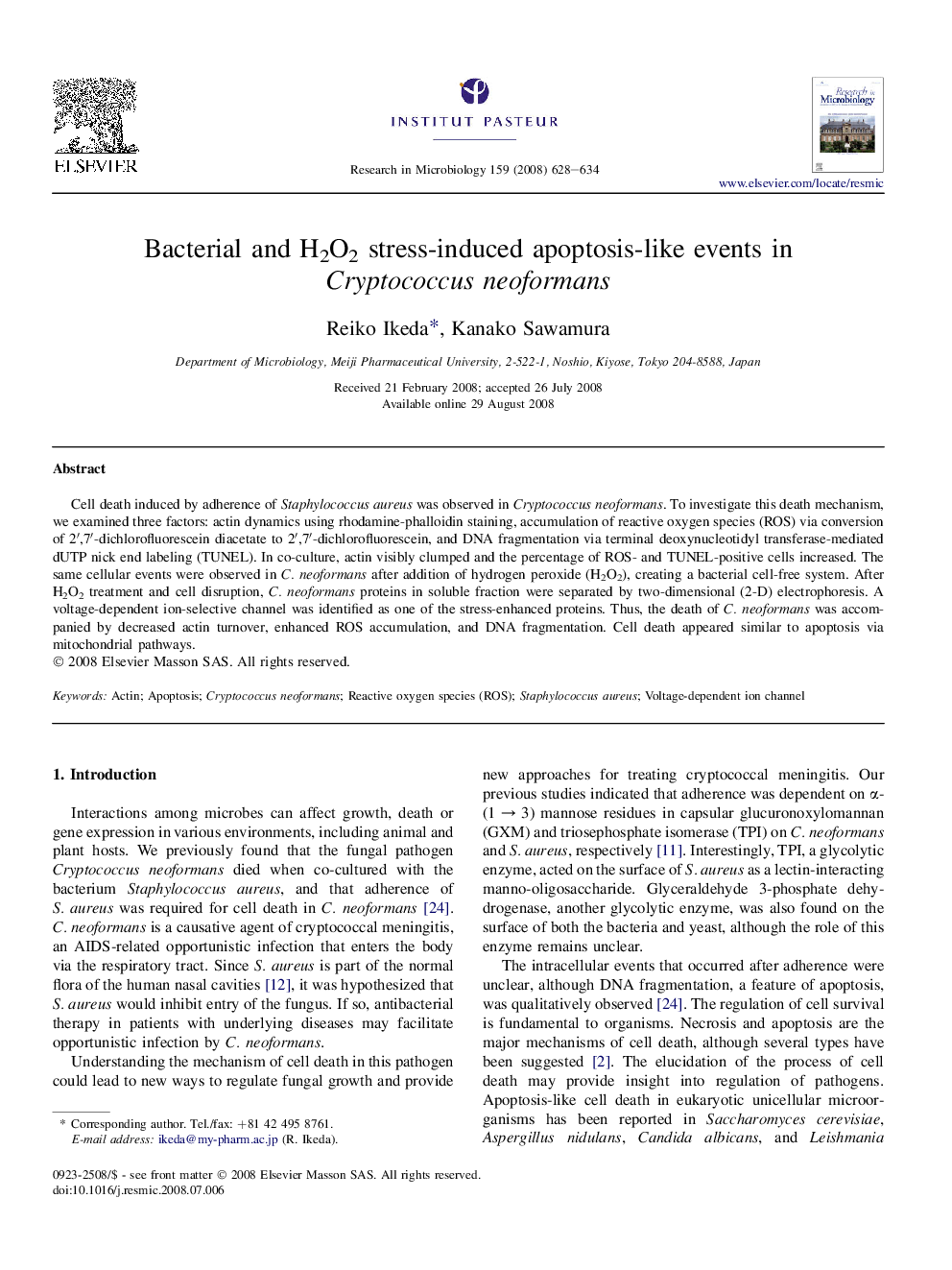| Article ID | Journal | Published Year | Pages | File Type |
|---|---|---|---|---|
| 6288197 | Research in Microbiology | 2008 | 7 Pages |
Abstract
Cell death induced by adherence of Staphylococcus aureus was observed in Cryptococcus neoformans. To investigate this death mechanism, we examined three factors: actin dynamics using rhodamine-phalloidin staining, accumulation of reactive oxygen species (ROS) via conversion of 2â²,7â²-dichlorofluorescein diacetate to 2â²,7â²-dichlorofluorescein, and DNA fragmentation via terminal deoxynucleotidyl transferase-mediated dUTP nick end labeling (TUNEL). In co-culture, actin visibly clumped and the percentage of ROS- and TUNEL-positive cells increased. The same cellular events were observed in C. neoformans after addition of hydrogen peroxide (H2O2), creating a bacterial cell-free system. After H2O2 treatment and cell disruption, C. neoformans proteins in soluble fraction were separated by two-dimensional (2-D) electrophoresis. A voltage-dependent ion-selective channel was identified as one of the stress-enhanced proteins. Thus, the death of C. neoformans was accompanied by decreased actin turnover, enhanced ROS accumulation, and DNA fragmentation. Cell death appeared similar to apoptosis via mitochondrial pathways.
Related Topics
Life Sciences
Immunology and Microbiology
Applied Microbiology and Biotechnology
Authors
Reiko Ikeda, Kanako Sawamura,
